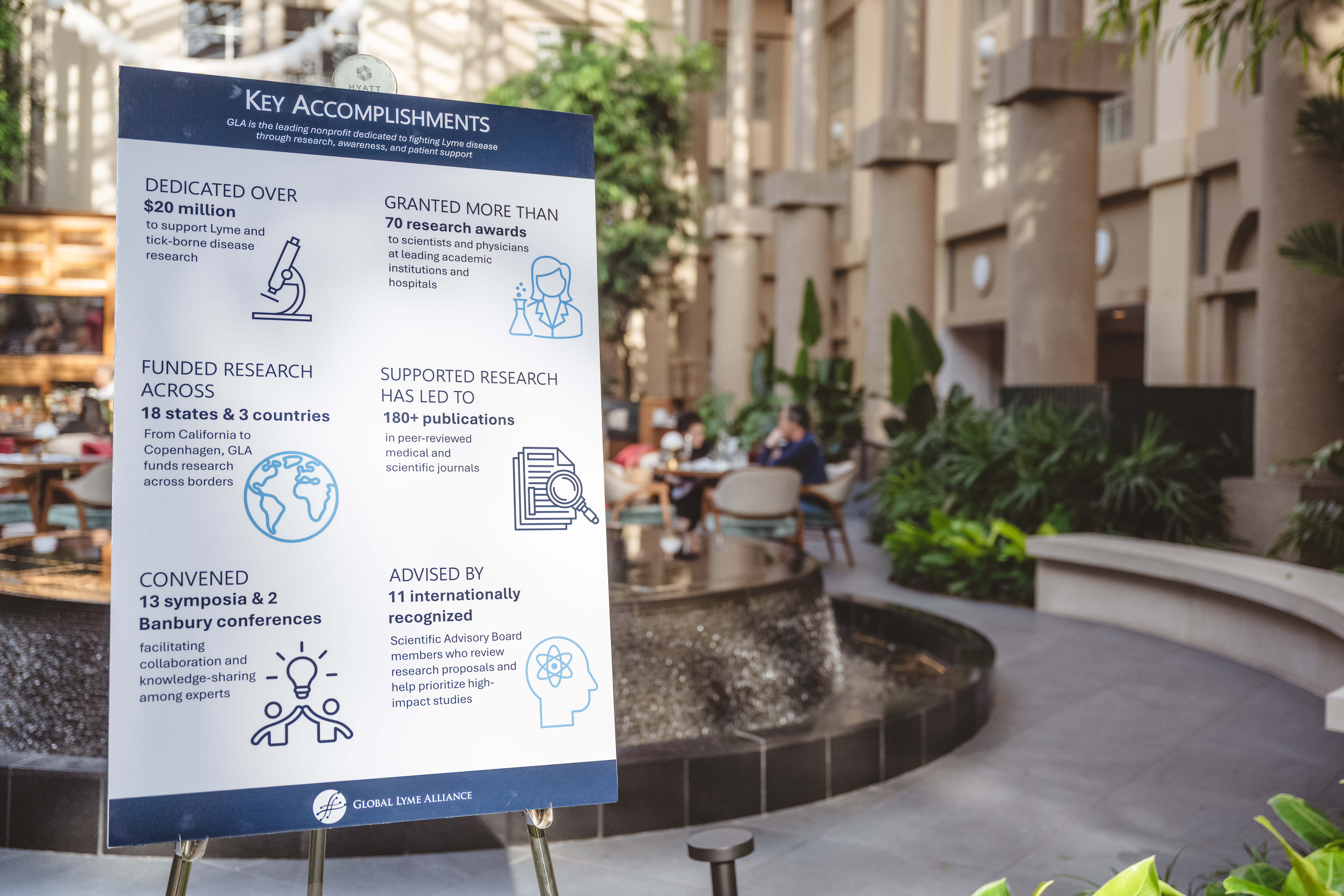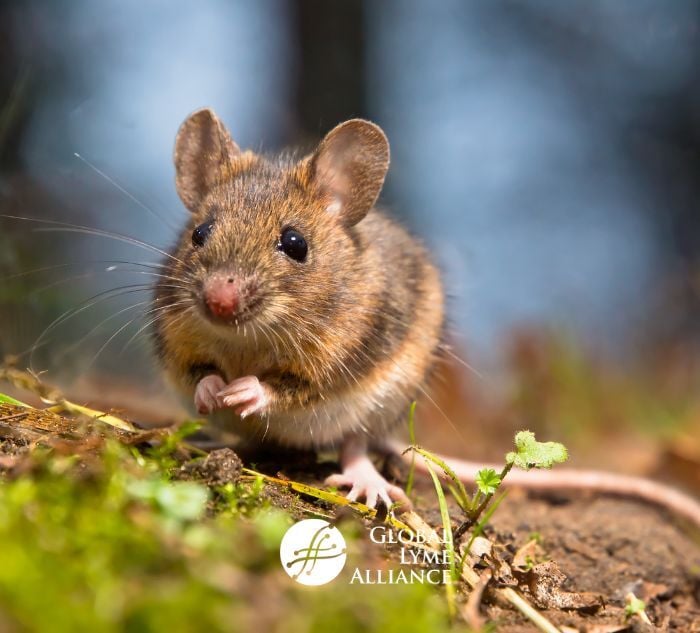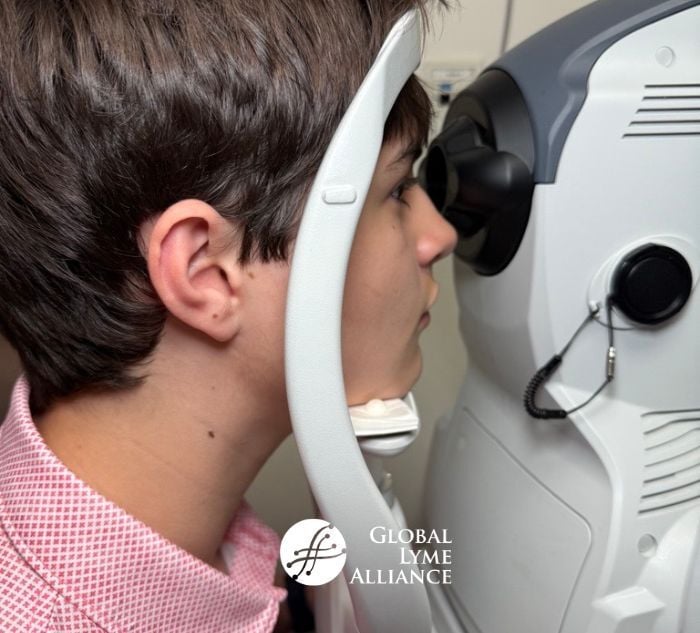
Two sisters, Gracie & Mia Burns, share their journey battling chronic Lyme disease, highlighting their struggles, treatments, and the impact on their family.
Grace:
I have suffered since 2017 with Chronic and Neurological Lyme Disease. I was diagnosed just before my 17th birthday; I write this now as a 25 year-old still struggling with mentally, physically, and emotionally debilitating symptoms that have defined much of my adolescent and adulthood experience.
Eight years ago, I came home from a run in the middle of July, and was unable to feel my legs. This sensation, coupled with burning and severe neuropathy, left me with limited mobility for the next couple of months. From then on, I started experiencing cyclical flu-like symptoms, including fever, chills, nausea. I still experience chronic ocular migraines to this day, as well as swollen lymph nodes and chronic fatigue. In 2023, I experienced a cardiac episode in the form of a Transient Ischemic Attack (TIA). Since Lyme, I have battled with suicidal depression. In sum, Chronic Lyme has manifested itself in my body and mind in every facet it seemingly could, and with each new symptom my family and myself have sought treatment to the best of its availability (which is seldom at best).
I was diagnosed multiple years after my symptoms began. After experimenting with rounds of general antibiotics, sleep studies, magnet therapy, electric shock therapy, steroids, diet changes, and a plethora of peripheral pathways, I was called off of the waitlist at Dr. Steven Phillips’ in Wilton, Connecticut. I was 20 years old when my practitioner at the time tested and validated I had 16 strands of Lyme, bartonella, and a group of additional co-infections.
In the fall of 2024, though, my experience with Lyme was expanded entirely. My then-20 year-old younger sister was diagnosed with chronic Lyme, and in tandem an onslaught of coinfections rattled off by the dozen. She had been experiencing flu-like symptoms, anxiety, and chronic fatigue since her freshman year in college, if not even earlier. When my sister, Mia, called my parents to deliver this news, I was devastated for multiple reasons. Though it’s something I deal with on a daily basis, we’ve grown into a familiar pattern, my Lyme and I. To think of my younger sister, in contrast, enduring the rounds of antibiotics, anti-virals, and experimental treatment that feel like commonplace for me was debilitating.
My sister chose to not share with me herself that she was diagnosed. In the moment, I was heartbroken, and presumed she didn’t feel comfortable including me in her journey, despite her being such a significant part of mine. Though, as this year has progressed, it became clear
that my experience with Lyme was traumatic for my entire family. This trauma did not allow my sister to communicate the reality to me. We, as a unit, would be going through it all over again.
Mia
My experience with Lyme started long before my diagnosis. I remember the summer, about eight years ago, when my older sister, Grace, became extremely ill. Within a weekend, the seemingly average life of my family of four was consumed with worry about my sister's health. She suffered from severe numbness, loss of feeling in her arms and legs, pins and needles, high fevers, and swollen glands, among other symptoms.
After three years of hospital visits and misdiagnoses, she was finally diagnosed with chronic Lyme disease, Bartonella, and several other co-infections. My introduction to Lyme was simply giving a name to the evil that had been making my sister suffer for the last three years. Even after her diagnosis, I watched her continuously battle the physical and mental rehabilitation that Lyme inflicts. When I thought of Lyme, I thought of pills, pain, persistence, and most of all, Grace.
During this time, I was facing my own health problems, although my symptoms were different from my sister’s and less severe. I grew up being known as the “sick friend,” a title I have since learned many chronic Lyme survivors share. I accumulated countless absences, missed field hockey games, and frequently canceled social plans because I was constantly sick.
My illnesses manifested differently throughout my youth and adolescence. I experienced excessive ear infections, severe anxiety, sore throats, chronic sinus infections, chronic fatigue, swollen glands, fevers, chills, and more. Each symptom was addressed individually as it arose, leading to frequent visits with urgent care doctors, ENTs, allergists, and naturopathic doctors -temporarily putting a bandage on my immediate pain. While we had asked my doctors several times for a Lyme test, we were often met with responses like, “Have you seen a tick bite on yourself?” or “Are you hiking in the woods a lot?” These dismissals led them to insist I did not have Lyme. After my brutal tonsillectomy failed to improve my health, my sister suggested that I visit her Lyme specialist.
At my very first appointment, my new doctor recognized several characteristics of a Lyme patient and did not hesitate to order specialized testing. This past spring, I was diagnosed with both Lyme disease and Bartonella. Reading my test results was profound. I had been waiting so long for a diagnosis to validate my health struggles, but in that moment, I felt no relief, only terror. Recalling the hardships I had watched Lyme put my sister and family through, I felt hopeless.
What I failed to acknowledge at the time was the amazing life my sister has led in spite of her chronic illness. She is a UConn and Columbia University graduate, an Account Executive at a sustainability and financial firm in New York City, and a social, active adult. With this in mind, I have been able to feel more hopeful as I begin my treatment plans. My treatment thus far has consisted of bi-weekly appointments with my Lyme specialist, pulse therapy through
antibiotics, organic supplements, low-dose naltrexone, weekly acupuncture, and weekly lymphatic drainage massages. While I haven’t yet reached the point of significant relief, I trust that with time and new treatments, I will find a healthy life again.
Grace & Mia
The most notable case of multiple siblings being diagnosed with Lyme is the Sweeney family, who in 2015 traveled with all six impacted siblings from Chicago, Illinois to India to receive novel treatment not available in the United States. Since 2015, treatment has not materially progressed for families and individuals fighting symptoms of Lyme. “Families with Lyme” conceptually, was further sensationalized by the Hadid family. Bella (sister), Anwar (brother) and Yolanda (mother) represented a famous family who have reported multiple cases of Lyme disease in the media. Their testimonies, though, were met with widespread criticism and skepticism alike. The public could not understand how all three family members could happen to have gotten such a seemingly niche chronic illness- and coined their diagnosis as an excuse for a drug problem, mental health issues, or eating disorders.
Despite advancements in the understanding of Congenital Lyme Disease, which is the transmission of Lyme from mother to fetus in utero; publicly available data sources, including the National Library of Medicine in the United States, go on record to say that Lyme disease ‘cannot be inherited’. Neither one of us will know with certainty whether we contracted Lyme in 2017 from the same tick, from similar ticks in proximity, congenitally, or during completely separate instances. Due to the dormant nature of Lyme, we could have both been infected far earlier than Grace originally displayed symptoms in 2017; and then subsequently had the infection physically present itself within our respective bodies at different times.
Often, the presence of symptoms coincides with ulterior physical stressors. In 2017, Grace was undergoing hormonal shifts during puberty, had recently received the Meningitis B vaccination, was applying to college as a high-achieving student, amongst a myriad of theoretical catalysts. In Mia’s case, she traveled to the University of Florida where she experienced black mold in her dorm, and a demanding academic schedule in the computer-science engineering department. In theory, these impacts could drive the presence of felt infection, but were not inherently related to both siblings being infected with Lyme disease.
The natural question arises here. How did we not catch Mia’s Lyme earlier? With access to a network of practitioners, extensive research, and personal experience- why did our family not come to the conclusion immediately when she had Lyme? The answer is that Lyme in nature is so varied from patient to patient - it did not look anything like it did for Mia as it did for Grace. Our family, much like the rest of the country, also was not aware of the ability of Lyme to be dormant, nor of its congenital nature. It seemed farfetched, if not unlikely, that BOTH Burns sisters would be diagnosed with the same chronic illness- especially when no other person in their personal life or network was.
However, Lyme really IS that prevalent. The Center for Disease Control (CDC) reports 476,000 cases annually - though more informed researchers such as the Bay Area Lyme foundation measured approximately 627,927 actual Lyme disease cases in 2024. These figures do not account for the 2 million patients struggling with persistent Lyme disease- including Mia and Grace Burns. To ignore the statistical probability of multiple family members contracting or inheriting Lyme is a disservice to your family’s and public health. With the recognition of both diagnoses, we are able to share treatment strategies, leveraging our genetic proximity to streamline the ‘shots in the dark’ that comprise Chronic Lyme care.
Anecdotally, a fascinating dichotomy is at play for the Burns family. To have undergone the trauma of treatment- encapsulating financial burden, emotional turmoil, time spent- was devastating to our family of four. Our parents have been on a journey with Chronic Lyme for almost a decade. To start from the drawing board 7 years in and go through the research, discovery, and early experimental treatment phases with a second child is inundating for them. Conversely, despite significant setbacks in our health, we are both success stories. As aforementioned, Grace works full-time in climate finance and received her Master’s degree this past year- now also an Adjunct Professor. Mia is completing one of the most rigorous programs at University of Florida in Compustat, and will be working in defense at RTX in a computer science engineering function. This to say, despite the ‘unlucky’ nature of a dual diagnosis, the opportunity to leverage our medical care to serve each other contributes to our ability to succeed despite our persisting battle with Lyme.
***

Grace & Mia Burns
Grace & Mia Burns
Grace Burns (25) and Mia Burns (21) are Chronic and Neurological Lyme survivors from West Hartford, Connecticut. Grace lives in New York, NY and works in climate finance, and teaches Ecology at Baruch College. Mia is a senior studying Compustat at the University of Florida and will be working in defense at RTX in a computer science engineering program upon graduation. They are loved by parents Peter and Tammy Burns.







-1.jpg)